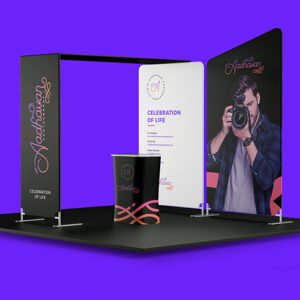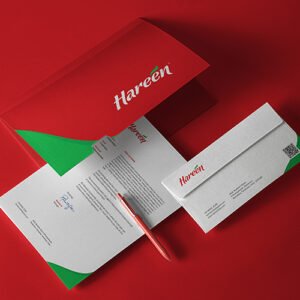Typography plays a crucial role in graphic design, as it encompasses the art and technique of arranging type to make written language legible, readable, and visually appealing. Choosing the right fonts is essential because they can convey emotions, set the tone, enhance the message, and create a cohesive design. Here are some key considerations when selecting fonts for graphic design:
Readability:
The primary function of typography is to communicate effectively. Therefore, it’s crucial to choose fonts that are legible and easy to read, especially when used in longer texts or smaller sizes. Fonts with clear letterforms and well-defined characters generally offer better readability.
Purpose and Tone:
Different fonts evoke different emotions and set the tone for the design. Consider the purpose and intended message of the project. Is it formal or informal? Playful or serious? The font should align with the desired tone. For example, a script font might be suitable for an elegant wedding invitation, while a bold sans-serif font can convey a modern and confident vibe.
Hierarchy and Contrast:
Typography helps establish a visual hierarchy within a design. Use different font styles, weights, and sizes to create contrast and guide the viewer’s attention. Headlines, subheadings, and body text should have clear distinctions, making it easier for readers to navigate and comprehend the content.
Consistency and Branding:
Typography plays a significant role in establishing and maintaining brand identity. Consistency in font choices across various design materials fosters recognition and reinforces the brand’s personality. Select fonts that align with the brand’s values and overall visual identity.
Pairing and Combinations:
Fonts often work better together in pairs or combinations. Aim for contrast and harmony when selecting complementary typefaces. Combining a serif font with a sans-serif font, for example, can create an interesting and balanced composition. Experiment with different combinations to find the right balance for your design.
Consider Context and Medium:
Fonts can behave differently depending on the context and medium of the design. Consider the final output, whether it’s print or digital, and how the font will render on different devices and screen resolutions. Some fonts may be better suited for body text in print, while others may work well for headlines on a website.
Avoid Overuse:
While there are thousands of fonts available, it’s important not to overuse them. Limiting the number of fonts in a design promotes visual coherence and prevents the overall design from becoming cluttered or distracting. Stick to a select few fonts that work well together and serve the design’s purpose.
Ultimately, choosing the right fonts in graphic design requires a thoughtful approach that takes into account the project’s purpose, audience, tone, and brand identity. By considering these factors and experimenting with different combinations, designers can create visually engaging and impactful design.








